|
|
|
|
“A healthy food system is an indicator of a healthy community;
one cannot exist without the other,” noted Native Hawaiian activist Kamuela Enos in a conversation with one of today’s authors.
If that is the case, then the U.S. isn’t looking in the peak of health this World Hunger Day. Over the last few months, The Conversation has been running a series of stories exploring the issue of food insecurity, which is when households are unable to eat enough healthy food.
Although the problem affected some 45 million in the U.S. in 2020, it afflicts some groups more than others. Black Americans suffer food insecurity at rates double that of their white counterparts – a racial gap explored in depth in a recent edition of our podcast. And 1 in 4 Native Americans is food-insecure – a problem that Valarie Blue Bird Jernigan, professor of rural health at Oklahoma State University, notes is steeped in the history of colonialism and stolen land. Meanwhile, professors of social work Margaret Lombe and Von Nebbitt turn to the
additional burden faced by formerly incarcerated Americans – some of whom face lifetime bans from receiving benefits that could alleviate their hunger concerns.
Our series also touches on the food system itself, and the close links between agriculture, food distribution and hunger. Purdue University economist Thomas Hertel explains why agricultural practices that conserve soil, air and water don’t have to cut into food production. And David Buys from Mississippi State reports on how Meals on Wheels, which supports 2.4 million older Americans, has had to adjust during the pandemic.
|
Matt Williams
Religion & Ethics Editor
|

|
|
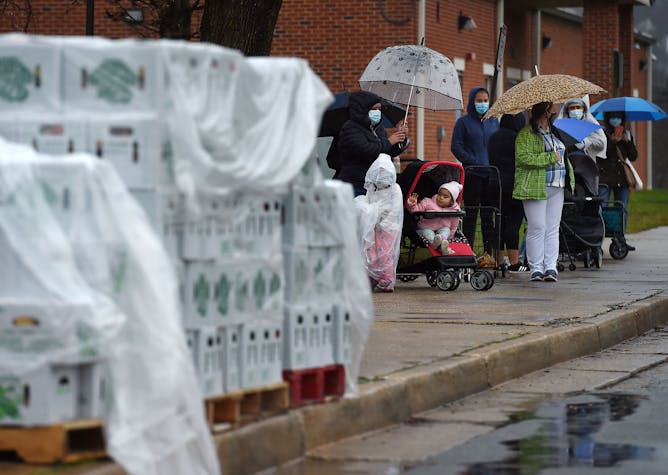
Lines outside food distribution centers have become a common scene.
Olivier Douliery/AFP via Getty Images
Craig Gundersen, University of Illinois at Urbana-Champaign
A team of experts are projecting that after a steep increase in 2020, food insecurity rates will dip in 2021. But behind this is a racial gap – rates for Black Americans will remain stubbornly high.
|
Hunger in the US
|
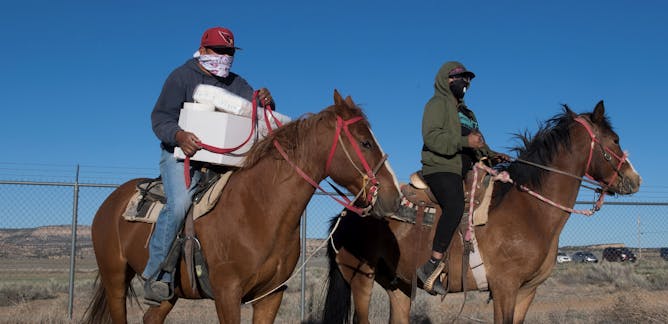
Valarie Blue Bird Jernigan, Oklahoma State University
Indigenous people in the US have high rates of food insecurity and dietary-related health problems. Any attempts to address the problem must start with land justice, argues a scholar of Native health and food.
| |
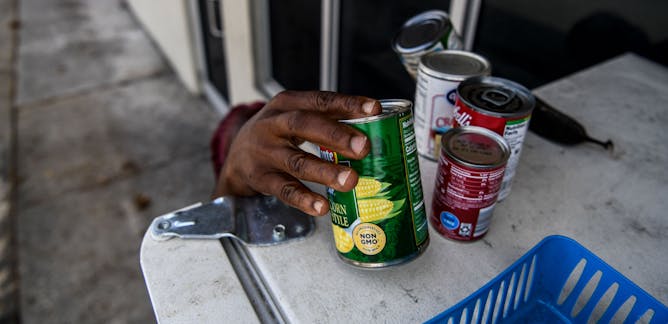
Margaret Lombe, Boston College; Von Nebbitt, Washington University in St Louis
Formerly incarcerated Americans face food insecurity rates double that of the general population. A 1996 law that prohibits drug felons from getting crucial benefits may be partially to blame.
|
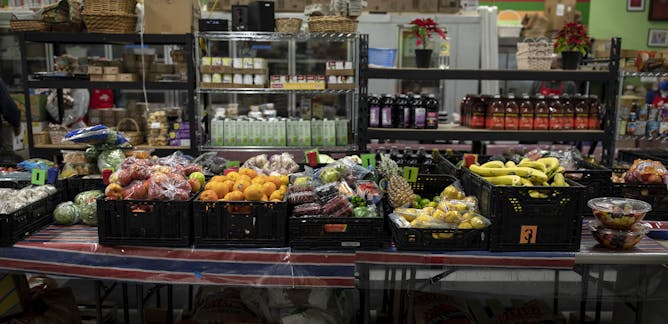
Caitlin Caspi, University of Connecticut; Marlene B. Schwartz, University of Connecticut
Behavioral economics, long employed in grocery stores to guide customers to certain products, could be employed by food banks and pantries to encourage healthier choices.
| |
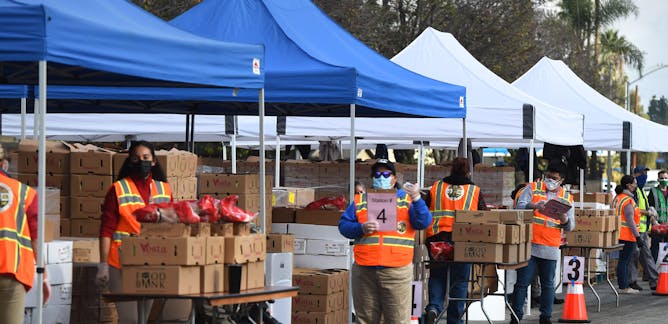
Noah Lenstra, University of North Carolina – Greensboro
These efforts are growing due to the coronavirus pandemic. They involve partnerships with school districts, food banks and other institutions.
|
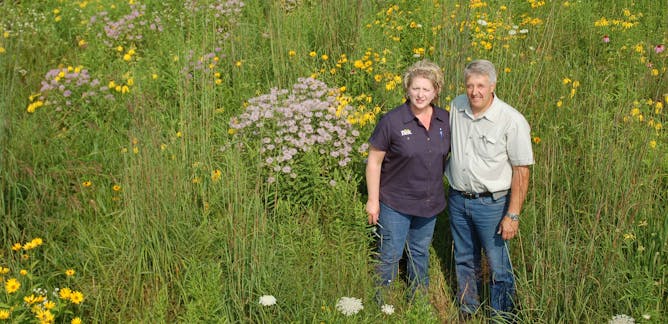
Thomas Hertel, Purdue University
It's possible to feed the world's 7.8 billion people with more environmentally friendly farming practices. Here's how.
| |
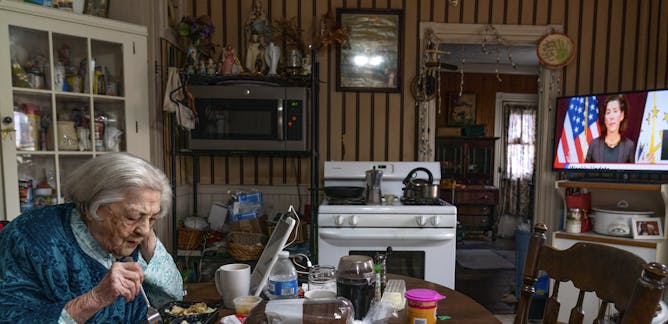
David R. Buys, Mississippi State University
Personal interactions between volunteers and the older adults they assist, which paused due to pandemic concerns, are resuming.
|
|
|
|
|
|
|
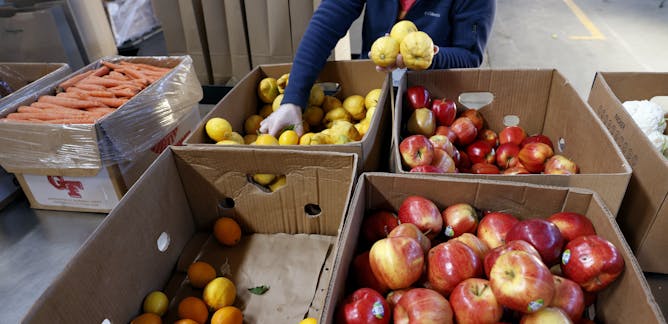
Gemma Ware, The Conversation; Daniel Merino, The Conversation
Plus, the discovery of the first known burial in Africa. Listen to episode 16 of The Conversation Weekly.
| |
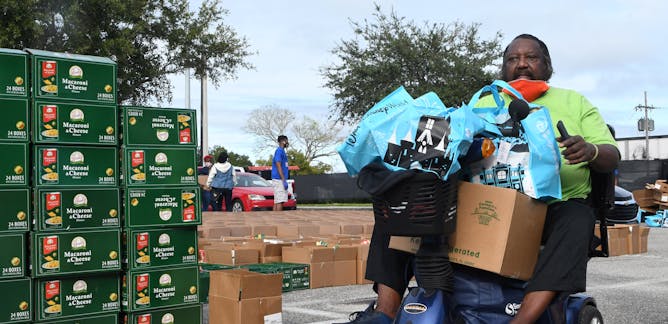
Melissa L. Caldwell, University of California, Santa Cruz
While long lines and food shortages are frustrating for most consumers, they can be physically and emotionally grueling for people with disabilities.
|
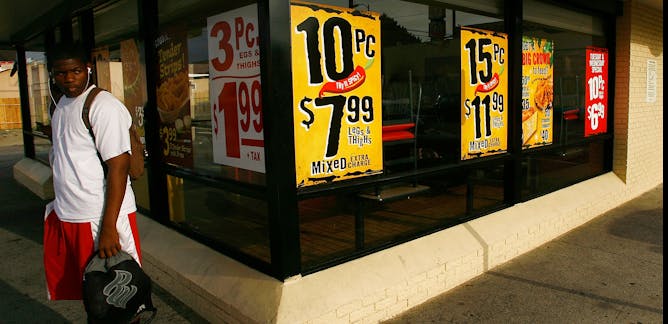
Julian Agyeman, Tufts University
Discriminatory zoning and housing policies have concentrated poverty in America along racial lines. As a result, healthy food options are limited in many low-income and Black neighborhoods.
| |
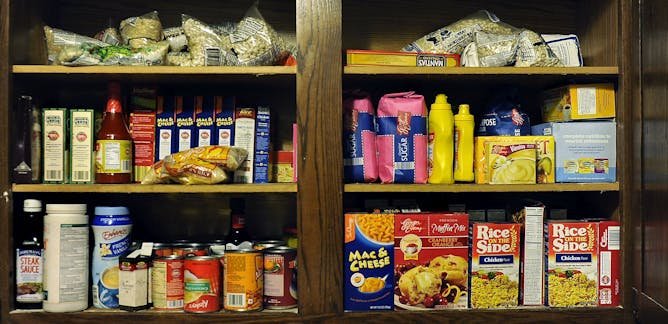
Tracy Roof, University of Richmond
The Biden administration is trying to shore up SNAP, a mainstay of the safety net.
|
|
|
|
|
| |
| |
| |
| |
| |
| |
|
|
|
|
|
|
|